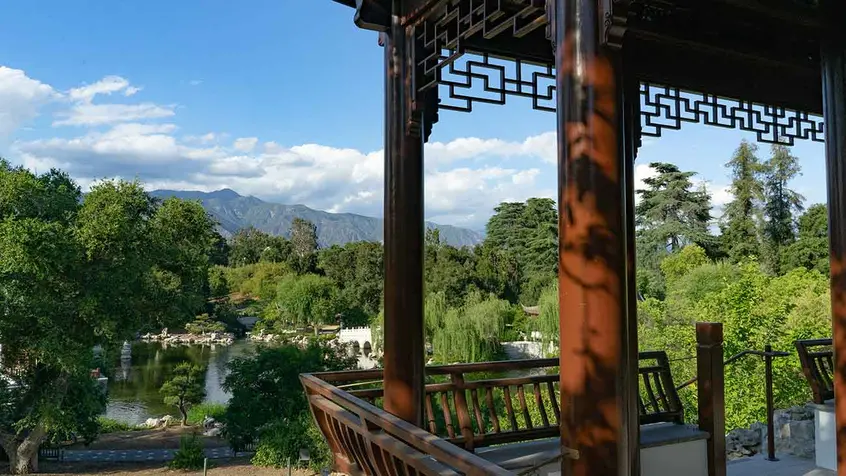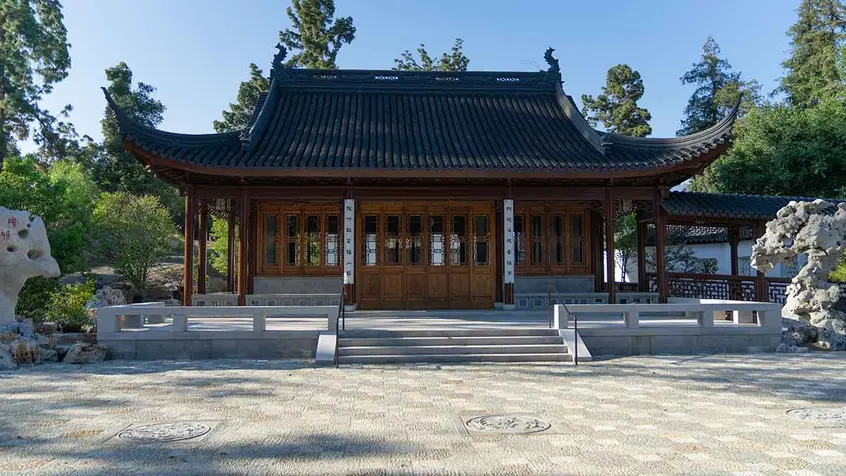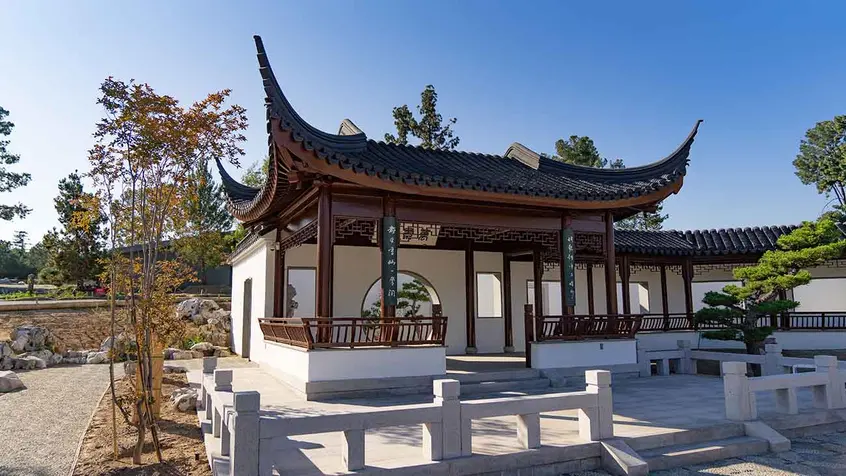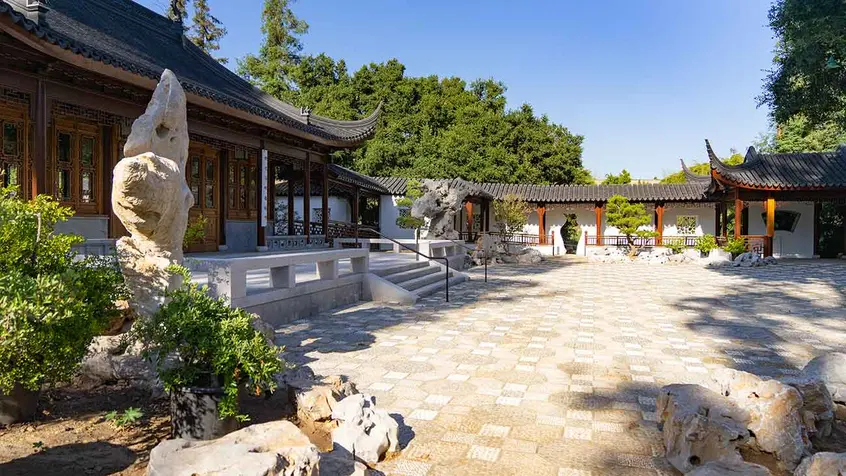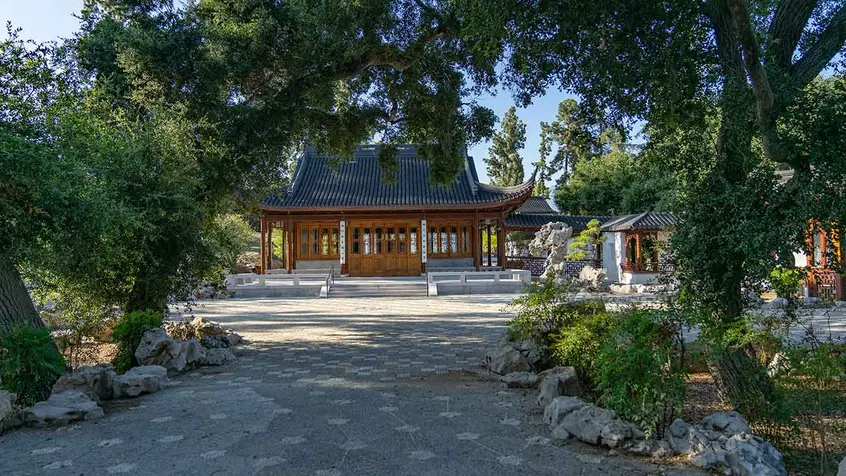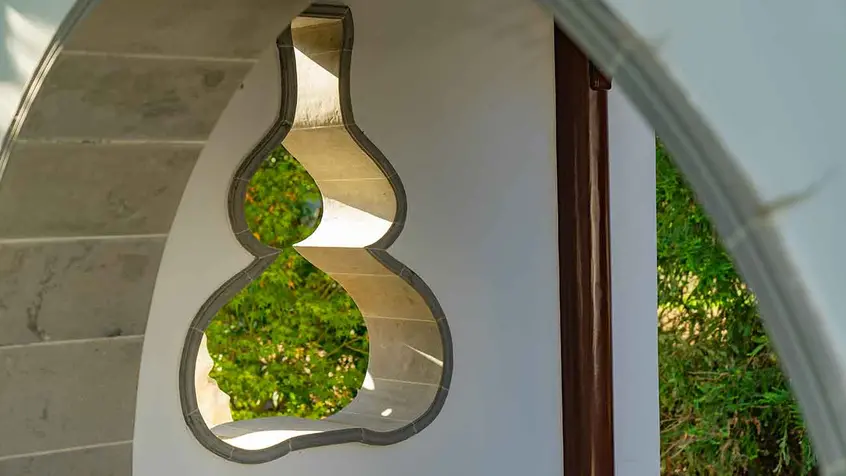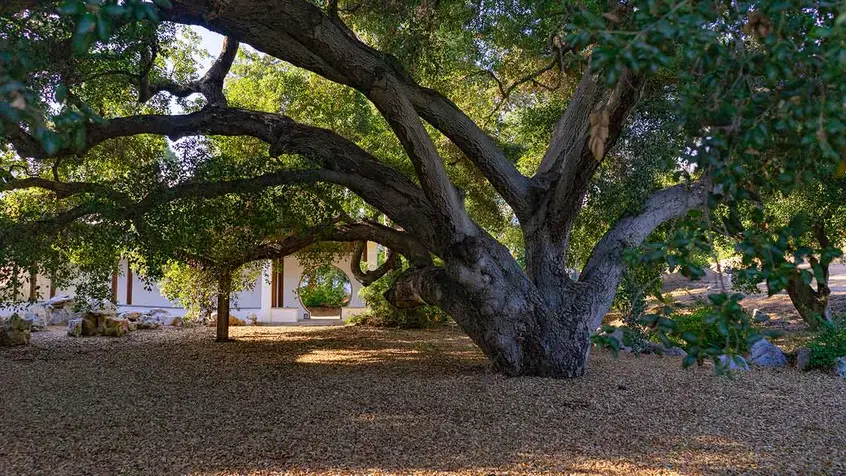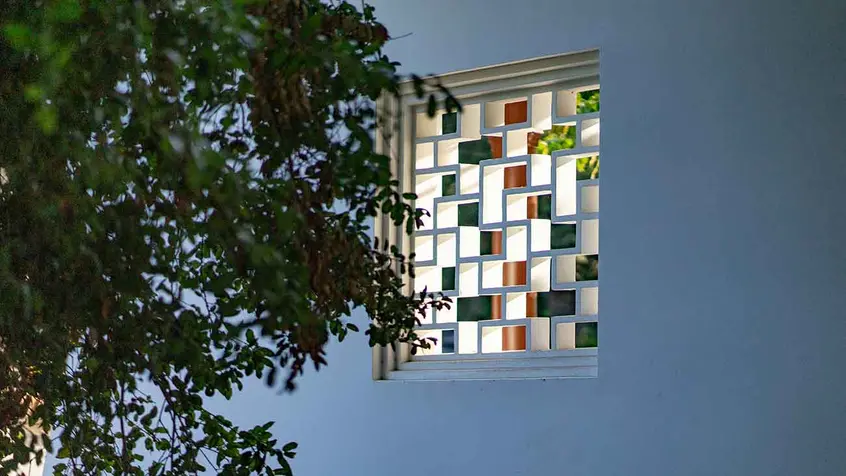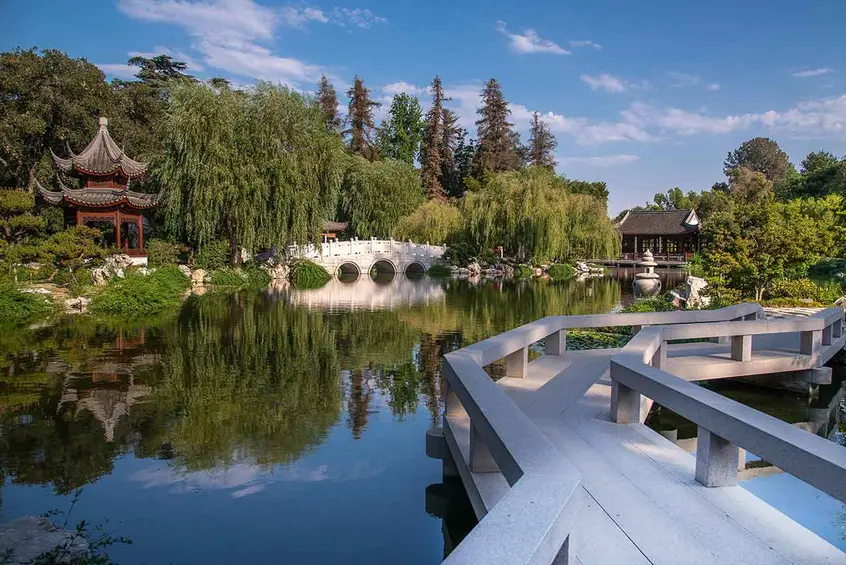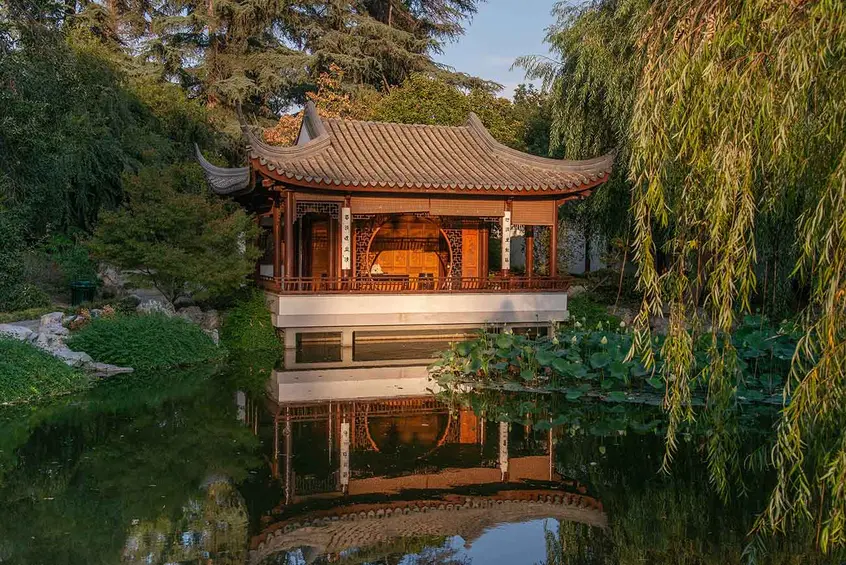Visitors will be treated to an additional 11.5 acres of landscape in the Chinese Garden, including new pavilions and a penjing court
A virtual press briefing will be held Friday, Oct. 2, at 10 a.m.
SAN MARINO, Calif.— After a nearly five-month postponement caused by the COVID-19 pandemic, The Huntington Library, Art Museum, and Botanical Gardens will open the outdoor areas of the highly anticipated expansion of its renowned Chinese Garden on Friday, Oct. 9, 2020. Visitors will be treated to 11.5 new acres of landscape, pavilions, and other features in Liu Fang Yuan 流芳園, the Garden of Flowing Fragrance. With this last phase of construction now complete, Liu Fang Yuan has expanded from its initial 3.5 acres to 15 acres, becoming one of the largest classical-style Chinese gardens in the world. The complex includes the 12 acres of the central garden, as well as an extensive bamboo grove on the garden’s western edge (to be completed in the next few months) and a conifer forest to the north.
“We are delighted to be able to welcome visitors to explore these exquisite new features that further demonstrate the beauty and depth of Chinese cultural and landscape gardening traditions,” said Karen R. Lawrence, president of The Huntington. “The debut of these new sections of the Chinese Garden coincides with the conclusion of The Huntington’s yearlong Centennial Celebration, and symbolically opens a new chapter in the institution’s history.”
Indoor spaces within this expanded section of the Chinese Garden will open later. These include a new art gallery and a traditional scholar’s studio, as well as a casual restaurant. The inaugural exhibition in the art gallery, “A Garden of Words: The Calligraphy of Liu Fang Yuan,” is set to open in May 2021.
“The Chinese Garden has been more than two decades in the making, and the opening of this expanded section is the realization of the long-shared vision that countless individuals have worked toward: generous community donors, architects and designers from China and the United States, hardworking staff and volunteers, and many others,” said James Folsom, the Telleen/Jorgensen Director of the Botanical Gardens. “Together we have created a world-class attraction that not only celebrates historical landscape traditions but also embodies the contemporary ideals of international cooperation and cross-cultural exchange.”
Timed entry tickets (purchased online in advance at huntington.org) are required for The Huntington as a whole, and visitors must comply with all mandated safety requirements, including a pre-entry symptom check, wearing face coverings, and maintaining physical distancing while on the property.
NEW FEATURES:
The Stargazing Tower 望星樓 – Situated on the highest point in the garden at the southern end of the lake, this beautiful 527-sq.-ft. pavilion provides stunning views of the landscape, the distant mountains, and (with a bit of imagination) the universe beyond. The name pays homage to the Mount Wilson Observatory—visible from the tower—and to the work of astronomer Edwin Hubble. Hubble’s papers are part of the Library’s holdings in the history of science.
The Verdant Microcosm 翠玲瓏 – This 17,900-sq.-ft. area on the western slope of the garden is designed for the study, creation, and display of penjing 盆景 (miniature potted landscapes, similar to Japanese bonsai). A complex of walled courtyards showcases dozens of examples of the penjing art form, as well as distinctive scholar’s rocks.
Reflections in the Stream and Fragrance of Orchids Pavilion 映水蘭香 – Shaded by mature California oaks near a gently flowing stream, this delicate 308-sq.-ft. pavilion is a place to pause, meditate, and be poetically inspired. The name recalls the legendary gathering of poets at the Orchid Pavilion in Shaoxing in 353, immortalized by the great calligrapher Wang Xizhi 王羲之 (ca. 303–361), who wrote the preface to the collected poems.
Courtyard of Assembled Worthies 集賢院 – Paved with intricate pebble mosaics, this expansive courtyard links the exiting Clear and Transcendent pavilion on the north side of the lake—a frequent site of concerts and performances—with the new exhibition complex. Together, these features will serve as a center for future cultural programming.
INDOOR SPACES TO OPEN AT A LATER DATE: The art gallery, Studio for Lodging the Mind 寓意齋, is a 1,720-sq.-ft. climate- and light-controlled building at the northern end of the garden that will showcase changing exhibitions of Chinese artworks, both contemporary and historical. The gallery’s inaugural exhibition will feature Chinese calligraphy. Adjacent to the gallery is the Flowery Brush Library 筆花書房, a hall designed in the style of a scholar’s studio—a garden retreat traditionally used to create paintings and calligraphy. Also in this north section is a new casual restaurant with outdoor seating, known as the Pavilion Encircled by Jade 環翠閣. And a large open space overlooking the lake, the Terrace of Shared Delights 衆樂臺, will be used for banquets, festivals, and other gatherings.
“One of our primary goals in building Liu Fang Yuan was to make Chinese gardening traditions—including landscape design, architecture, art, and poetry—accessible to a wide audience of both Chinese and non-Chinese visitors,” said Phillip E. Bloom, the June and Simon K.C. Li Curator of the Chinese Garden and Director of the Center for East Asian Garden Studies. “The penjing complex, for example, provides a window onto a centuries-old horticultural art form, and the new art gallery will anchor an exhibition and performance complex for which we are planning a robust slate of public programs, lectures, concerts, academic symposia, school programs, and other cultural offerings.”
RELATED PROGRAMS:
Cultural programming slated to coincide with the opening will include a virtual screening of the video “Fragrant Rhythms: The Seasons of Liu Fan Yuan” 漢庭溢彩,雅園流芳 by artist Tang Qingnian, on Sunday, Oct. 11, at 4 p.m. The video was produced during Tang’s residency as the Cheng Family Visiting Artist in 2019. The screening will be followed by a conversation with the artist and soundtrack musicians Wu Man (who composed the score) on the pipa (lute) and Kojiro Umezaki on the shakuhachi (bamboo flute). Presented on the Zoom videoconferencing platform, the screening is free with reservations, available at huntington.org/calendar.
Online lectures related to the opening will include “The Pleasures of Chinese Gardens” by curator Phillip E. Bloom on Thursday, Oct. 8, at 4 p.m., and “The Past and Future of The Huntington’s Asian Gardens” by James Folsom, the Telleen/Jorgensen Director of the Botanical Gardens, on Thursday, Oct. 29, at 4 p.m. Reservations can be made for free at huntington.org/calendar.
In addition, a special display of orchids throughout the Chinese Garden will celebrate the debut of the expanded features. Many of the flowers will be drawn from The Huntington’s own extensive orchid collections, supplemented by blooms from local orchid societies and commercial exhibitors. The display is tentatively scheduled for Oct. 16–18.
An updated audio tour, including all the garden’s new features, can be downloaded at huntington.org/chinese-garden.
ABOUT THE CHINESE GARDEN:
Inspired by the centuries-old Chinese tradition of private scholars’ gardens, Liu Fang Yuan made its debut in 2008 with eight pavilions linked by courtyards and walkways situated around a one-acre lake. In 2014, two new pavilions and a rock grotto were added. Groundbreaking on the garden’s final section began in August 2018. The following year, more than 50 Chinese artisans from the Suzhou Garden Development Co. spent six months at The Huntington carrying out specialized carpentry, masonry, and tile work for the traditional structures in the final phase. Their artisanship gives the garden its authenticity and beauty.
As with the earlier stages of the garden’s construction, this project has been an international partnership between Chinese and American architects, contractors, and craftspeople—all working together to ensure that the garden remains authentic to Chinese traditions of architecture and landscape design while meeting state and federal regulations for seismic safety and accessibility. Los Angeles architect Jim Fry developed the detailed construction plans for the expansion based on the conceptual designs of the Suzhou Institute of Landscape Architecture Design in China. The Irvine-based construction engineering firm of Snyder Langston oversaw building construction; BrightView of Calabasas was the landscape contractor.
Major gifts that have funded this final phase include $3 million from Joy and Matthew Lin; $3 million from Mei-Lee Ney; $2.5 million from Judy Yin Shih and Joel Axelrod; $2 million from June and Simon K.C. Li; and $1 million from Helen and Joseph Koo.
The total cost of this final phase of construction was approximately $24.6 million. This brings the combined total cost of the garden to about $54.6 million, all of which was raised from individual, corporate, and foundation gifts.
Ticketing and other important visitor information can be found at huntington.org/visit.
# # #
[EDITOR’S NOTE: High-resolution digital images available on request for publicity use. Members of the media may also request b-roll video footage, including a pre-recorded video interview with curator Phillip Bloom. Opportunities to visit the new sections of the garden prior to opening are available on a limited basis by advance reservations. A virtual press briefing about the expanded Chinese Garden will be held on Friday, Oct. 2, from 10–11 a.m. To reserve a space and receive a link for the press briefing, or to schedule a media visit to the site, please RSVP to lblackburn@huntington.org.
Contacts
Lisa Blackburn, 626-405-2140, lblackburn@huntington.org
Thea M. Page, 626-405-2260, tpage@huntington.org
About The Huntington
The Huntington Library, Art Museum, and Botanical Gardens is a collections-based research and educational institution that aspires to be a welcoming place of engagement and reflection for a diverse community.
In 2008, The Huntington established its Chinese Garden, Liu Fang Yuan 流芳園, the Garden of Flowing Fragrance, which is one of the largest and most authentic classical-style gardens outside of China. Enthusiastically supported by the local community, the garden has quickly become a nexus for cross-cultural exchange. Through its Center for East Asian Garden Studies, The Huntington uses the Chinese Garden as the focal point for a wide variety of lectures, symposia, exhibitions, and performances that help promote a deeper understanding and appreciation of Chinese culture.
Visitor Information
The Huntington is located at 1151 Oxford Rd., San Marino, Calif., 12 miles from downtown Los Angeles. Information: huntington.org or 626-405-2100. (Check huntington.org for updates during this period for new visitation protocols due to COVID-19.)
